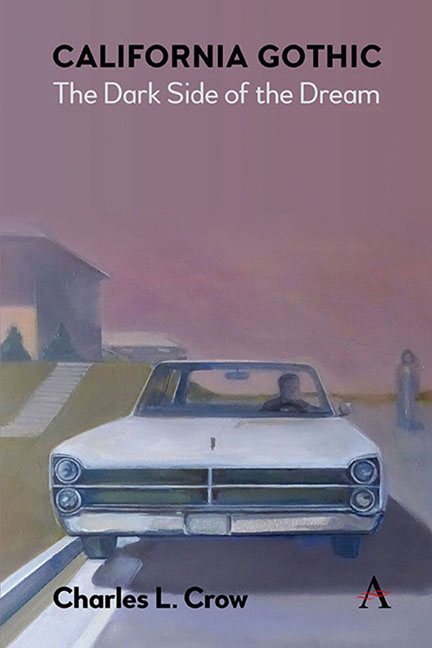Book contents
- Frontmatter
- Dedication
- Contents
- List of Figures
- Preface
- Acknowledgements
- 1 The Magic Island
- 2 Ambrose Bierce and San Francisco’s Gothic Frontier
- 3 Lost Coasts
- 4 Disease, Pandemics, and the Monstrous
- 5 The Shadow Line: Noir and California Gothic
- 6 California Ecogothic: What’s Buried in the Basement
- Works Cited
- Afterword
- Index
4 - Disease, Pandemics, and the Monstrous
Published online by Cambridge University Press: 27 March 2024
- Frontmatter
- Dedication
- Contents
- List of Figures
- Preface
- Acknowledgements
- 1 The Magic Island
- 2 Ambrose Bierce and San Francisco’s Gothic Frontier
- 3 Lost Coasts
- 4 Disease, Pandemics, and the Monstrous
- 5 The Shadow Line: Noir and California Gothic
- 6 California Ecogothic: What’s Buried in the Basement
- Works Cited
- Afterword
- Index
Summary
It occurred to me that there was no difference between men, in intelligence or race, so profound as the difference between the sick and the well.
—F. Scott Fitzgerald, The Great GatsbyAt that time Tod knew very little about them except that they had come to California to die.
—Nathanael West, “The Day of the Locust”California has long been associated with sunshine and healthy outdoor living. Yet there is an alternative, a dark side, in the realm of California Gothic: California as the site of disease: diseases like tuberculosis (TB) and the secret, shameful syphilis, or AIDs, or imagined diseases that might destroy civilization, perhaps by turning humanity into zombies or vampires. Illness, as Susan Sontag has schooled us, can be a metaphor and can reveal our anxieties about ourselves, our society, and our belief in progress. Here, as in other ways, California has been the bleeding edge of American culture at large. This chapter is a quick trip through a statue gallery, or pest house, of more than a century of California Disease Gothic.
Not long after the Gold Rush had nearly wrecked California’s foothills and waterways through hydraulic mining and miners and settlers had massacred most of the state’s interior native population, visitors and residents began to promote its wholesome climate. John Muir wrote of hiking and mountaineering in the Sierra as physically and spiritually healing—a faith still celebrated by the Sierra Club. The dry Mediterranean climate of Southern California might heal lung disease. Charles Fletcher Loomis, for example, walked from Ohio to Los Angeles in 1884 seeking to cure his TB and stayed to edit the magazine Land of Sunshine (later Out West) and promote California as a destination of health and prosperity.
People came. Probably Health should be inserted into the title of Claire Faye Watkins’s novel, Gold Fame Citrus, as a reason for the state’s boom.
And there was good reason to flee the cities of the East and Europe, which were, in fact, cesspools of disease. According to Lyra Kilston,
The nineteenth century witnessed a grim march of epidemic diseases without remedy.
- Type
- Chapter
- Information
- California GothicThe Dark Side of the Dream, pp. 35 - 44Publisher: Anthem PressPrint publication year: 2024

